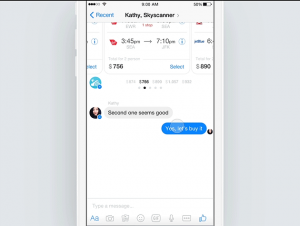Building a chatbot for your business can be fun. It’s amazing how Chat bots can automate a major part of your business, specially if it has to interact with a lot of customers.
Before you get started, it is wise to anticipate the type of conversations your chatbot could be having with your customers to deliver best user experience.
Chatbot conversations can be classified into three types, reflecting upon the types of users that it may interact with which your business should always be ready for.

Users provide every input in a separate sentence
This is the simplest case and most of the chat bots today are being designed with this type of chat flow. Everything is expected and predictable and it is just like filling up a web form (frankly).
So, conversation with a hotel chatbot would go like this:
Chatbot: Hi. I can help you book a room at our hotel. When would you like to check in?
User: Hey. I will be checking in on 8th of March 2018
Chatbot: Cool. When would you like to checkout?
User: 10th of March
Chatbot: This room would be for how many guests?
User: 2
Chatbot: Here are the 3 types of rooms we have on the available dates
Now, let’s see how it would go with a different type of user, someone who is a little impatient and likes to get to the point quickly.
Users gives all the answers in one sentence to the Chatbot
This user crams everything into one single sentence. This is an ideal conversation for a human but a complicated one for a chatbot to process. Here is how the chat would look like:
Chatbot: Hi. I can help you book a room at our hotel. When would you like to check in?
User: Hey. I wish to book a room from 8th March till 10th March for 2 guests.
Chatbot: Cool. Here are the 3 types of rooms we have on the available dates
The above conversation itself is a curve ball for a lot of chatbot development platforms and most of them cannot make sense of the above sentence at all.
User misses out on some information required to transact with the Chatbot
This user does a good job in telling his requirement but misses out on something which is required to perform the task. In such a case, the bot needs to followup with a question to complete the transaction.
Here is how this will look like:
Chatbot: Hi. I can help you book a room at our hotel. When would you like to check in?
User: Hey. Me and my wife will arrive on 8th March.
Chatbot: Cool. When would you be checking out?
User: 10th of March
Chatbot: Here are the 3 types of rooms we have available on the dates above
Just like second conversation, even this one is hard to manage by many chat platforms. Plus, it is hard to determine which input was left out that needs to be turned into a question so that a chatbot transaction can be concluded.
A word of caution while deciding on a Chatbot platform
Not all chatbot platforms can support all these 3 types in all industries. So, it is important to know the limitations of your chatbot platform (API.ai, Wit.ai, Smarter.Codes, IBM Watson, Microsoft Bot) before you realize you are half way developing on a chatbot platform that won’t even work for you. That would save you time and money.

